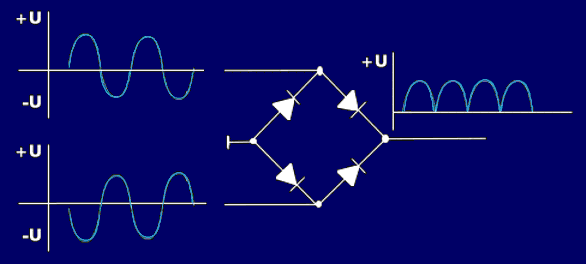rectifier
Rectifiers, AC to DC converters, are electronic components or circuits that allow alternating current to pass in one phase position, but block the other phase position. Rectifiers, which can be thyristors or diodes, but also bridge circuits made of diodes, turn alternating voltage into direct voltage.
Since simple rectifiers allow only one half-wave of the alternating voltage to pass, a signal is produced which consists only of individual half-waves. Whenever a positive half-wave is applied to the anode of the diode, this half-wave is allowed to pass, while the negative half-waves are blocked. The resulting signal consists of individual half-waves between which there is zero potential for half the period duration.
It is different with bridge rectifiers, the so-called Graetz bridges. In this circuit, both half-waves are rectified so that the resulting signal is a string of positive half-waves. The half-wave signals that are generated downstream of the rectification are smoothed to a DC voltage by downstream filter circuits.
Rectifiers are used in power supplies and power supplies and also in demodulators.

